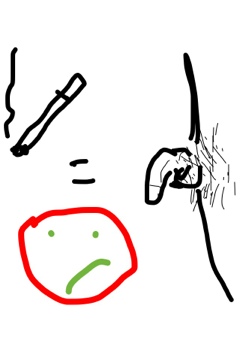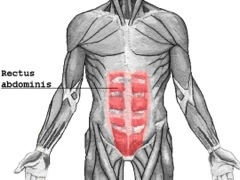To strike with power and be effective you need to be able to generate speed and force and be able to drive it to its destination.
Also you need to be able to do it without losing balance and stability or you will give your adversary the advantage.
Below are five key components that will help you be a more powerful Bareknuckle Striker.
__________
1. Move the feet from under the center of mass to quickly drive the body in the direction it needs to go.
In order for you to develop the power to knock someone out quickly, you need to bring yourbody weight behind your punch.
Footwork is the key but it must be a coordinated effort with your body mass.
You must be able to move as one unit, not as fragmented parts.
Both feet must be under your hips and on the ground or your punch will loose up to forty percent of its power output.
Drop Stepping and Trigger Stepping, two powerful components of power punching use the drive created from footwork to generate a large amount of force.
But, it must bring the body’s mass with it or your punch will not have knockout power.
2. Keep the hips low and level when moving linearly, laterally or diagonally.
If your hips are moving up and down like a buoy being tossed around on rough seas, you will be wasting your strength, energy and sacrificing speed.
Keeping the hips level as you move takes advantage of leverage and gravity to help increase your speed and movement.
Having your hips low gives you explosive balanced energy.
Your legs become compressed springs ready to explode and drive the body.
3. Be quick with your fists.
Never let your fists get behind the drive of your legs, hips and torso or your punches will lack power and follow through.
The fists must move in a coordinated effort with the feet and torso to be able to generate maximum power.
This will speed up your strikes without losing power.
This is what I call “Striking Off Your Move”, this principle is very important to use in a street fight.
Remember never drag your weapons to war.
4. Decelerate with purpose.
Nothing is more dangerous than to throw a punch with such force that it throws you off balance and leaves you open for a counter attack.
What is the use of throwing bombs that end up being duds and draining you of precious energy you can’t afford to lose?
You need to develop what I call “Controlled Aggression”, to be able to control your power and not let it get away from you.
Using this powerful principle will allow you to harness your power, you will be able to flow smoothly and chain your punches more effectively.
Having intent with every strike and step you take is the tactic you want to cultivate for better knockout stopping power in astreet fight.
And if you miss, you will be able to instantly fire off another powerful strike, as you will be balanced, controlled and explosive without missing a beat.
5. Stop the power leakage.
Improper fist and body alignment will contribute to power leakage in your strikes and slow you down.
You will leak out power through your joints if they are not properly aligned when you throw a punch.
Adjusting and aligning your structure will go a long way to developing your power when striking.
__________
So there you have it five key components to help you unleashbareknuckle power on your unlucky adversary.
Using these five keys will help to unlock your potential to strike with power and destruction.
It will also take you less time and energy to do what needs to be done in a dangerous situation.
When violence tries to touch your life, take it out with Speed,Power and Intent using these five key components in your fight game.
Daniel Sambrano
“Keep It Simple and Savage”


